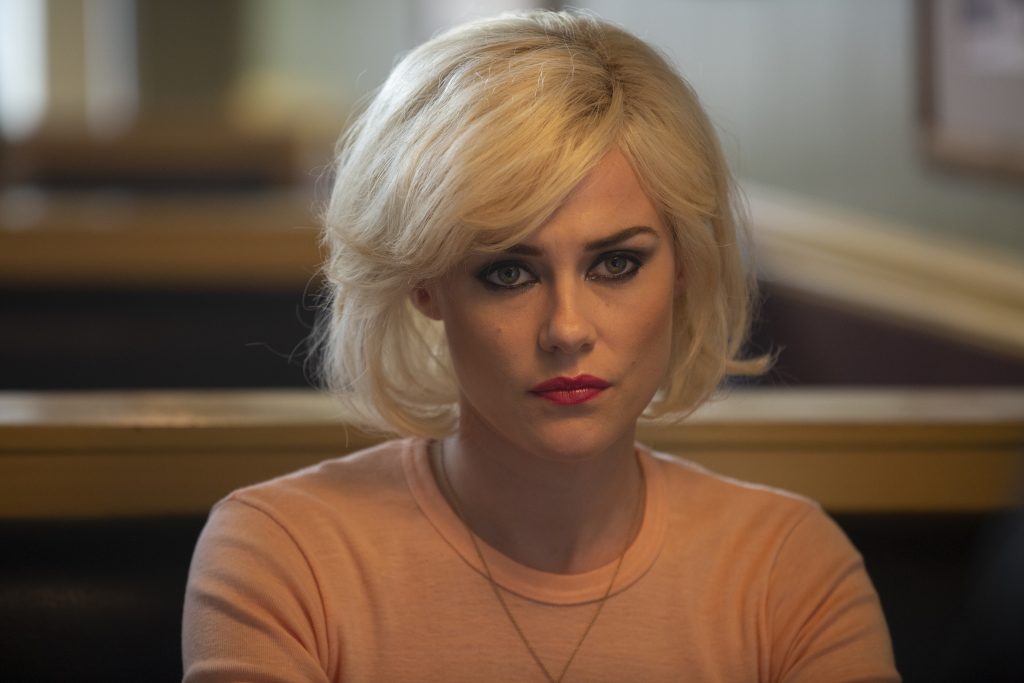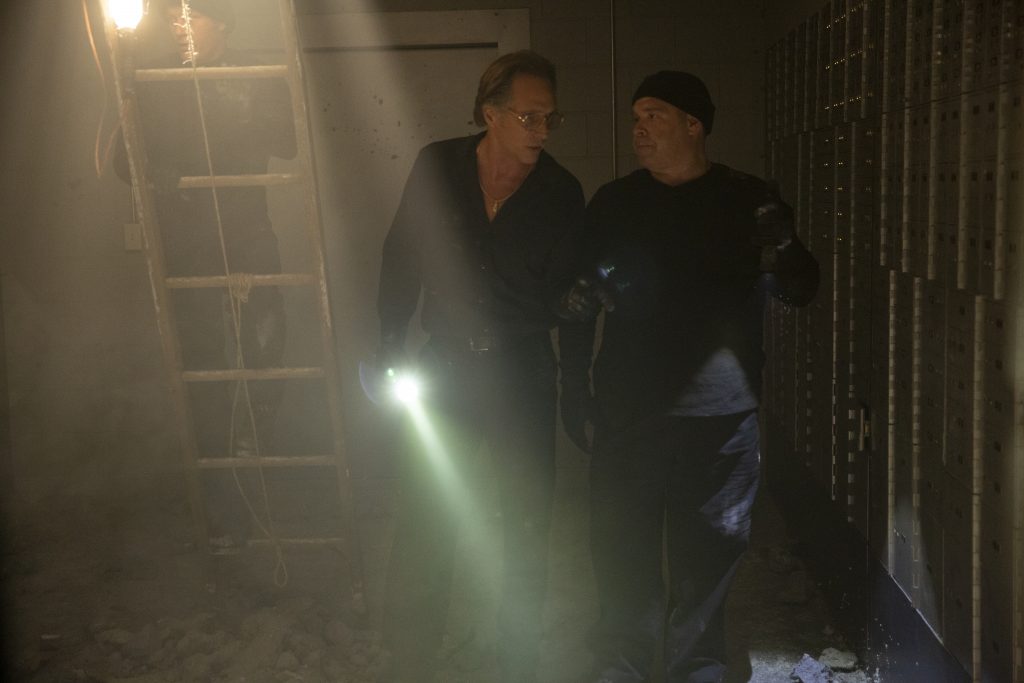The spring of 1972 would have been a difficult time to take pride in the upper echelons of power in the United States. America’s terribly corrupt administration was deeply invested in an unpopular and costly war and they also happened to be on the cusp of a scandal that would bring immense shame to the presidency, rock the country to its core and ultimately bring down Richard Nixon himself.
It became known to some criminal elements that ‘Tricky Dick’ was stashing his own ill-gotten gains at a bank in the then sleepy (but fabulously rich) retirement community of Laguna Niguel, California. Enter an elite crew of criminals from Youngstown, Ohio willing to take the job. The successful execution of their meticulously crafted plan resulted in one of the largest bank heists in United States history netting the crew over 9 million dollars, 54 million in today’s cash.
While most of the perpetrators were caught in the immediate investigation, one member of the crew by the name of Harry James Barber was able to live on the run for almost a decade after the crime. It is his fascinating story that is loosely chronicled in the very entertaining FINDING STEVE MCQUEEN (dir. Mark Steven Johnson).
We are clued into the obsession that Harry Barber (Travis Fimmel) has with actor Steve McQueen early on. Barber styles himself after the actors’ most iconic character and during the opening credits he pauses in front of a BULLITT poster hanging in his apartment and mirrors McQueen’s pose. Barber enjoys driving fast cars, will talk about the actor to anyone who will listen and favors using the alias ‘Steve McQueen’ when conducting more nefarious activities. It’s 1980 and Harry is living in small Pennsylvania town under another assumed name and on this particular morning he has a confession to make…
Learning that her boyfriend is an infamous criminal wanted by the FBI is understandably shocking for Molly Murphy (Rachael Taylor), and she doesn’t believe Harry at first. But when he produces a wanted poster that features him front and center she agrees to hear him out.
Harry starts his story back in 1972 in Youngstown, Ohio. He is a young troublemaker looking to prove himself to his crime-connected uncle Enzo Rotella (William Fichtner – playing a stand-in character for Amil Dinsio, the real-life mastermind behind the United California Bank Heist). Enzo runs a vending supply company with his second-in-command Pauly Kelly (Louis Lombardi), but the real business is big scores committed by a gang of professional lowlifes. One day, the knowledge of a secret Nixon campaign slush fund lands on Enzo’s doorstep and the opportunity to hose a man he despises while becoming filthy rich himself is too good to pass up.
Enzo tasks Harry with learning more about the bank’s alarm system. This mission results in a high-speed chase and a car on fire but Enzo is impressed anyway and makes Henry part of the team, which also includes hot-head Ray Darrow (Rhys Coiro), and Tommy Barber (Jake Weary), Harry’s younger brother who suffers from PTSD due to his time in Vietnam.
Once the crew makes it out to California for the robbery the film begins flitting between several different time periods. These include 1) Harry’s 1980 confession to Molly, 2) 1972 in the months after the robbery when Harry is on the run and he and Molly meet, 3) The execution of the heist itself over a three day period, and finally 4) the very immediate period after the heist when the crime is under intense investigation by FBI agents Howard Lambert (Forrest Whitaker) and Sharon Price (Lily Rabe).
The frequent and oft-confusing jumps in time are where FINDING STEVE MCQUEEN begins to lose a little bit of its luster. While each vignette is mostly compelling on its own, the sequencing of these scenes causes their concurrent narratives to conflict and ultimately cancel each other out. For example, during his initial workup of the crime scene Agent Lambert mentions that he was across the street from bank during the time of the robbery and didn’t realize anything was amiss. Later in the film we are taken to that very night and the thieves are aiming an Uzi at Lambert from the bank roof and fiercely debating what to do. Based on the earlier scene we know that the thieves don’t end up shooting Lambert or causing an incident. Thus, deflating the tension. It’s supposed to be a hefty emotional turning point for Harry but ends up feeling flat.
The timing is perhaps a little unfair but we’re just coming off the astounding third season of TRUE DETECTIVE, (dutifully and beautifully recapped by my AAGG colleague, Sy Shackleford here.) during which frequent time jumps and the storytelling tools contained therein were the lynchpin of the entire season. These changes in time (3 main timelines separated by roughly ten years apiece) were handled beautifully, leaving and picking up each time period with exact precision; answering questions and creating new ones in equal measure. To reduce audience confusion the characters all have a very specific aesthetic in each time period and the era-specific production design is on point. Lastly, each time period’s narrative moves in a linear fashion within itself. Meaning that all of the scenes that take place in True Detective’s version of 1980, for example, occur in order throughout the season. In other words, every time True Detective Season 3 flashes back to 1980 we are seeing the NEXT event in the timeline. Compare this to FINDING STEVE MCQUEEN’s constant unmotivated Tarantino-ing and production design that is largely similar across it’s main time periods. I’m not by any means implying that this narrative juggling act is easy, but we know that can be handled deftly, and here the film definitely falls short.
What’s more, the real-life contours of the case make it easy to see where the story is heading well in advance though the writing does take plenty of liberties with the source material; rearranging events, changing some characters around and creating others from whole cloth. Obviously, this is part and parcel for a ‘based on a true story’ biopic, but none of it seems to be in service to the pacing or story as the film’s narrative just doesn’t feel as tight as it could have been.
That being said, once you clear that hurdle there is a lot to dig in FINDING STEVE MCQUEEN. First off, Mark Steven Johnson’s direction particularly during the car chase and heist scenes is both exciting and fun, displaying his pre-MCU Marvel movie bonifides. Some of the scenes made me laugh even if they are a little extraneous. I’m thinking specifically of a scene where the criminals get to California and encounter a hot tub for the first time.
Fimmel and Taylor ultimately display good chemistry as the films’ Bonnie and Clyde. Their relationship starts a little stilted but the scenes that show the origin of their love eventually solidified it for me. Of all of the performances I think that Fichtner does the best work as team boss Enzo. His Ahab-like obsession with sticking it to Nixon motivates some of the films’ more dramatic moments and aside from that he’s given a lot of good funny bits. Lombardi’s Pauly is also given some good one-liners. Whitaker and Rabe as the agents after the crew are likable and move the plot forward, though I feel the film doesn’t do as much as it thinks it does to draw up the CATCH ME IF YOU CAN dynamic between Lambert and Barber.
Fimmel, playing Barber as a mostly good hearted, soft-spoken boy, works even if the illusion is occasionally broken by his natural Australian accent. By the end of the film I found myself rooting for the character, misdeeds and all, and hoping for the best possible outcome for Harry and Molly. (Side bar: As it turns out, the real-life Harry had made such a good name for himself in the small town where he hid out that many of his neighbors would testify on his behalf and help reduce his sentence. Why was that relegated to a pre credit coda and not part of the films’ story? That’s dramatically juicy stuff!)
One last thing worth mentioning would be the film’s absolutely fantastic needle drops. The soundtrack is peppered with a lot of great pop rock tracks from the 70’s. A new song pops into every other scene with Scorsese-like enthusiasm and it’s great. Soundtrack purchase? Definite possibility.
FINDING STEVE MCQUEEN is well worth the time for those willing to partake in a fun heist film with a historical bend; a decent mix of action, comedy and drama. It’s a story about one of the biggest robberies our country has ever witnessed and the man who, for a time, got away with it. It is also a reminder that no matter how powerful someone is and no matter how much harm they do, even if they are the President of the United States, karma is waiting in the wings.
For some reason that is a comforting thought.
FINDING STEVE MCQUEEN is available on VOD services and in select theaters on 3/15.







